
Few dishes are as useful to have in your repertoire as kisir. A delicious and filling bulgur salad, it’s great enjoyed on its own, but also perfect as a meze or side dish with any meat or vegetable. Here’s the simple recipe I use to make Turkish kisir in less than 10 minutes!
When I was invited to cook up a meze feast at the Eid programme of Norwegian national broadcaster NRK earlier this year, there was a request. How about we make kisir one of the dishes?
Well, of course I’ll make kisir!
This spicy bulgur wheat recipe has long traditions, and is more than a meze. It makes for sublime leftovers the next day, working just as perfectly as a side dish as it does as meze.
What is kisir?
Kisir is a spicy Turkish bulgur wheat salad. It’s among the most quintessential and beloved of Turkish dishes, and is eaten all across the country. In Turkish, its correct spelling is kısır (pronounced ‘kəhsər’).
Regional variations of the dish can differ quite substantially. The punchiest (and, in my humble opinion, best) versions are found in the Southeast. Further west, people prefer the more subtle and gentle flavours, opting for a more lemony seasoning over the pomegranate molasses and hot pepper paste laden versions of the Southeast.
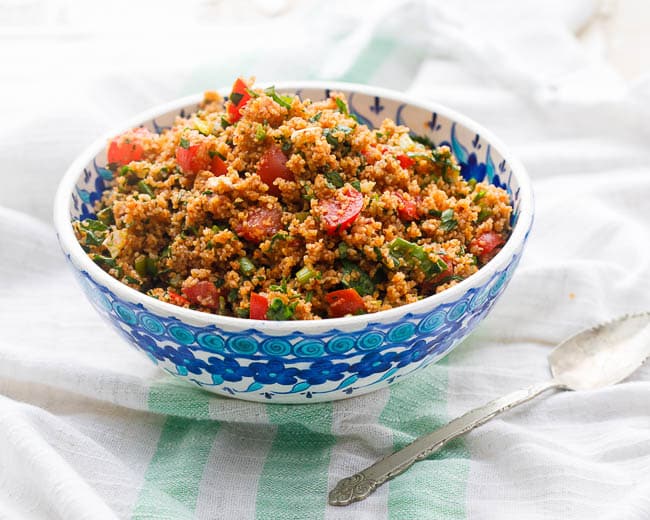
The origins of kisir are in fact Levantine. This is evidently clear from the bold flavouring, more typical of Arab food than Turkish.
The difference between tabbouleh and kisir
It’s actually quite likely that kisir shares origins with tabbouleh, the Lebanese herb & bulgur salad.
Contrary to what many believe, including Lebanese and Palestinians, tabbouleh started its life as a bulgur salad in the Lebanese mountains. It’s only over time that the dish evolved to its current form. These days, in the Middle East, at least, it’s first and foremost a herb salad. Bulgur takes on a supporting role.
It’s believed that the Turkish kisir salad itself evolved from an early form of tabbouleh. In Turkey, however, the bulgur has remained the key ingredient. Kisir is firmly a bulgur salad, the herbs playing only a minor role.
Which bulgur to use for kisir
If you’ve been to a Middle Eastern grocer, you’ve probably seen the plethora of choice in the bulgur shelves.
Bulgur is basically parboiled, dried and cracked wheat, preferably durum wheat. It’s common across much of the Middle East and Turkey, where it was the dominant grain until rice relegated bulgur to second place. Bulgur has a nutty flavour which gives it more character than rice, and which works a treat with the flavours typical of the Middle Eastern and Turkish cuisines.
The difference between the different types of bulgur is usually their size.
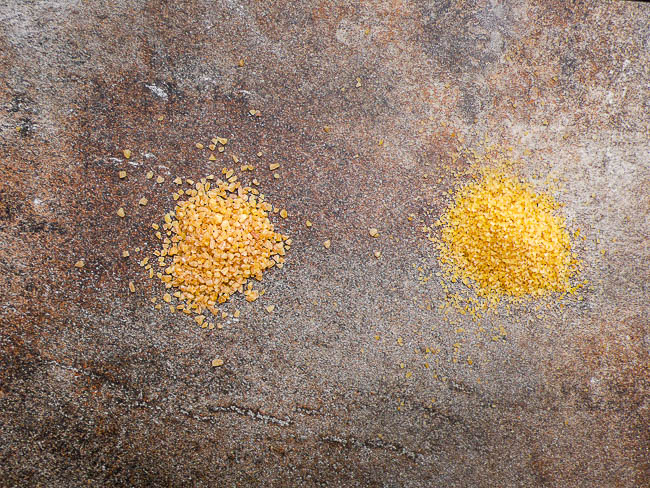
The most common varieties are what’s commonly labeled in Turkish as pilavlık, which are large grains similar to rise, and köftelik, which are fine grains similar to fine couscous. The former is usually used to cook bulgur pilaff (similar to how you would cook rice).
Köftelik bulgur is most commonly used in doughs (such as for vegetarian meatballs) or – indeed – for bulgur salads such as kisir. I recommend seeking it out, but if you can’t find it, a fine couscous will work well as a substitute.
These days, you can also get spelt bulgur. This have a slightly different colour and flavour. There are nutritional differences as well. Note that spelt bulgur typically has a stronger flavour, and will not always work well.
I recommend using spelt bulgur (or a mix of spelt and durum wheat bulgur) for plain pilaffs only. In dishes such as kisir, its stronger flavour will interfere too much with the seasonings of the dish.
How to make kisir
Making kisir couldn’t be easier! In fact, the biggest job is probably going to be sourcing the ingredients.
In addition to the fine bulgur described above, you’ll need to get hold of Turkish hot pepper paste and pomegranate molasses. In a pinch, you can substitute tomato paste and chili flakes for the hot pepper paste. But whatever you do, don’t go skimping on the pomegranate molasses.
Unfortunately, commercially available pomegranate molasses vary wildly in quality. The cheaper varieties are often a glucose syrup concoction with lots of artificial flavourings and only a tiny bit of actual pomegranate. These are often far too sweet and won’t give the right flavour to your Turkish or Middle Eastern kitchen adventures.
I therefore always suggest to check the labels before purchasing. Pomegranate should be the only ingredient – or at the very least the substantial ingredient. Beware also of bottles labeled “pomegranate sauce”. These are typically very sweet and should be avoided.
If you’re in Turkey, I highly recommend the pomegranate molasses available at Turunc Gida. They ship all across Turkey.
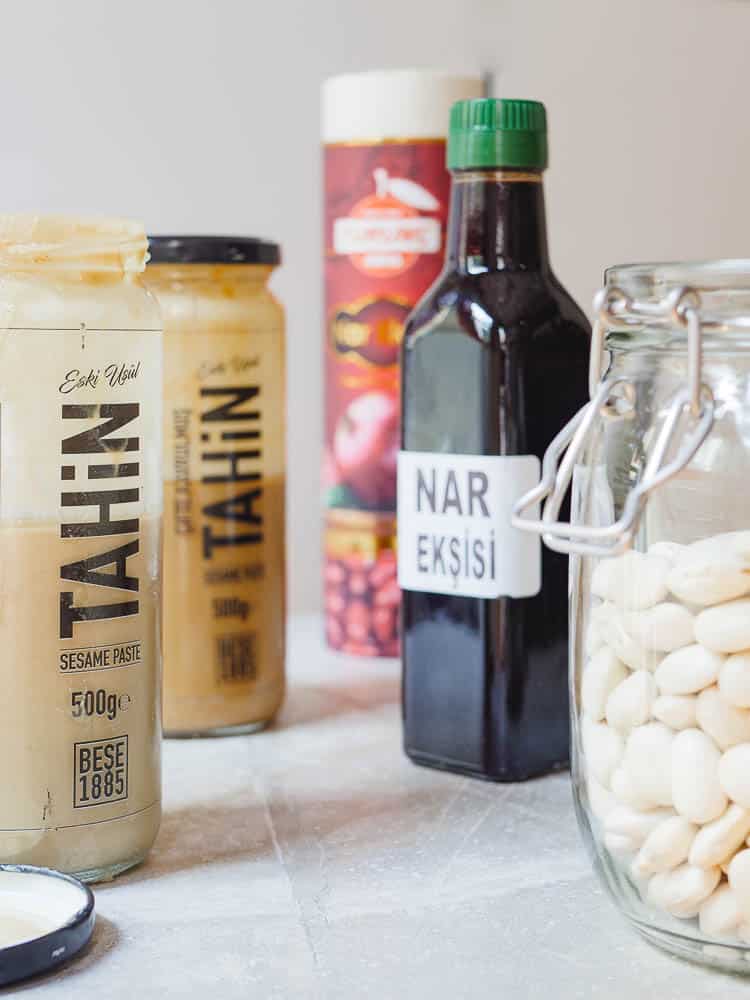
It’s true that some in the Western parts of Turkey, more accustomed to delicately flavouring their foods, prefer to add just lemon juice, but I really do think that the sweet and sour tartness of the pomegranate molasses really elevates this bulgur wheat salad.
Making kisir takes less than 10 minutes!
With your ingredients at hand, this kisir recipe takes literally five minutes. All you need to do is mix the tomato and hot pepper pastes with boiling water, then add the bulgur to soak. The bulgur being so fine, it doesn’t need cooking, only soaking in hot liquid.
While the bulgur is soaking, you simply chop up the remaining vegetables. Once the bulgur is ready, you mix it all together, and you’re done!
Some may note that cucumber is missing from my recipe. Cucumber is indeed a common addition.
As far as I can tell, this is a later and not an original addition. In any case, I prefer mine without. I don’t think it’s a good match with the other ingredients. Much better to serve a cucumber and herb-laden cacik alongside, if I feel like some cooling cucumber!
There’s another reason, though. Kisir makes for brilliant leftovers that work with just about anything. In fact, it’s one of those rare salads that, like stews, improve in flavour over the first 24 hours.
Cucumbers, however, lose their crispness and go soggy within hours. Without cucumber in the mix, kisir keeps better and can be enjoyed over a couple of days.
How to serve spicy Turkish bulgur salad
Kisir is a brilliant addition to any meze table, adding both flavour and a filling element to your meze spread. In that case, it’s best served in little scoops of baby gem lettuce. Or you can keep it simple and serve it in a bowl with lettuce on the side for people to scoop it up themselves. Or you can, of course, just omit the lettuce altogether.
When in season, it’s customary to serve the salad with fresh vine leaves in certain parts of the country. In the south-east, where the kisir traditions are the strongest, it’s commonly served to welcome guests at your house.
But most useful of all, this Turkish bulgur salad is also a brilliant side salad with virtually anything. Chicken, fish or grilled meat, kisir is always your friend! Keep in mind though, that kisir is very flavourful. Accordingly, prepare your protein simply to avoid a clash of flavours.
Apparently, kisir is popular alongside omelette too. And if you’re going for a vegan option, just add some chickpeas and some green leaves and you’ve got yourself a filling, nutricious and absolutely delicious bowl of salad!
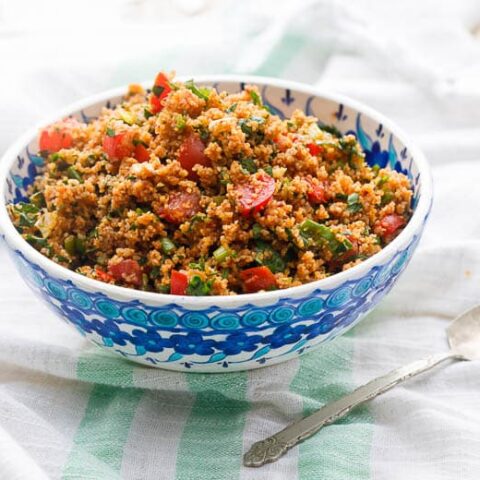
Kisir (Spicy Turkish bulgur wheat salad)
Ingredients
- 35 g tomato paste
- 15 g Turkish hot pepper paste (acı biber salçası)
- 200 ml boiling water
- 200 g fine bulgur
- 6 spring onions (green onions/scallions), finely sliced
- 250 g tomato, (2 medium), cut into small cubes
- 40 g flat-leaf parsley, without thick stalks, finely chopped
- 6 Tbsp extra virgin olive oil
- 2 Tbsp pomegranate molasses
- 1 tsp pul biber (Aleppo pepper), or other chili flakes to taste
- salt and pepper
How I make it
- Mix the tomato paste, hot pepper paste (if using) and boiling water until completely mixed. Stir in the bulgur. Set aside until the bulgur has softened and cooled a little, 10-20 minutes.
- Mix the bulgur with the remaining ingredients. Season with salt and pepper to taste.


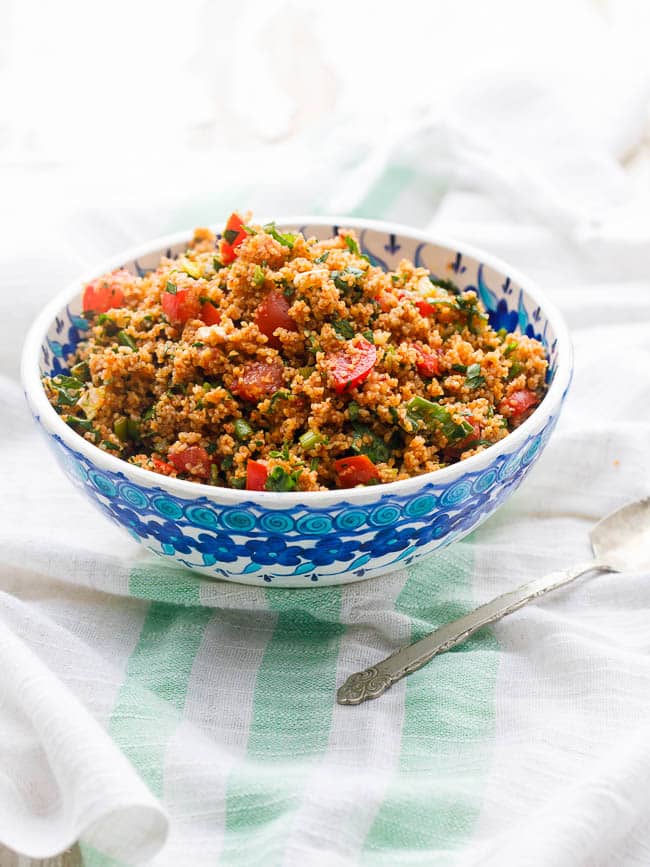


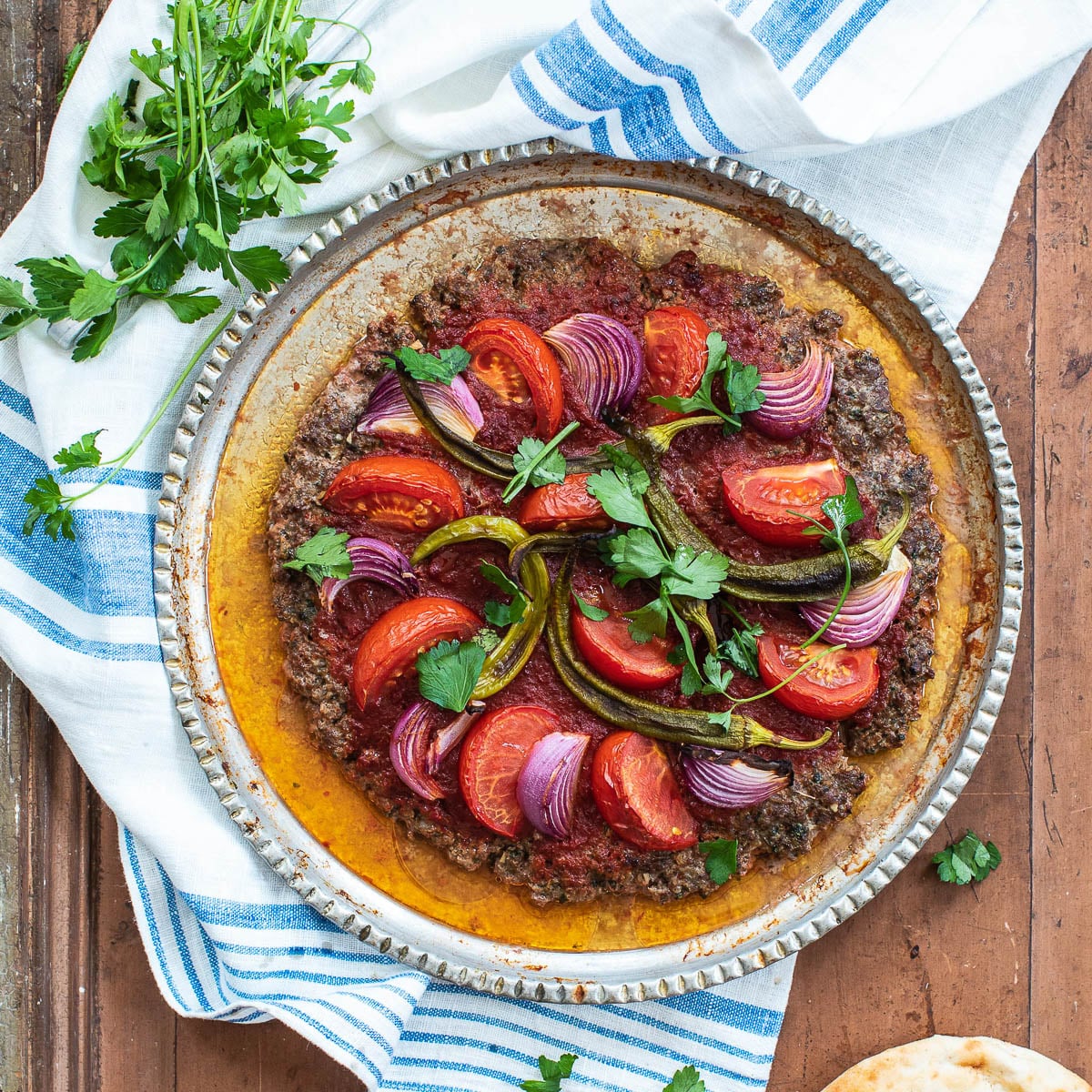
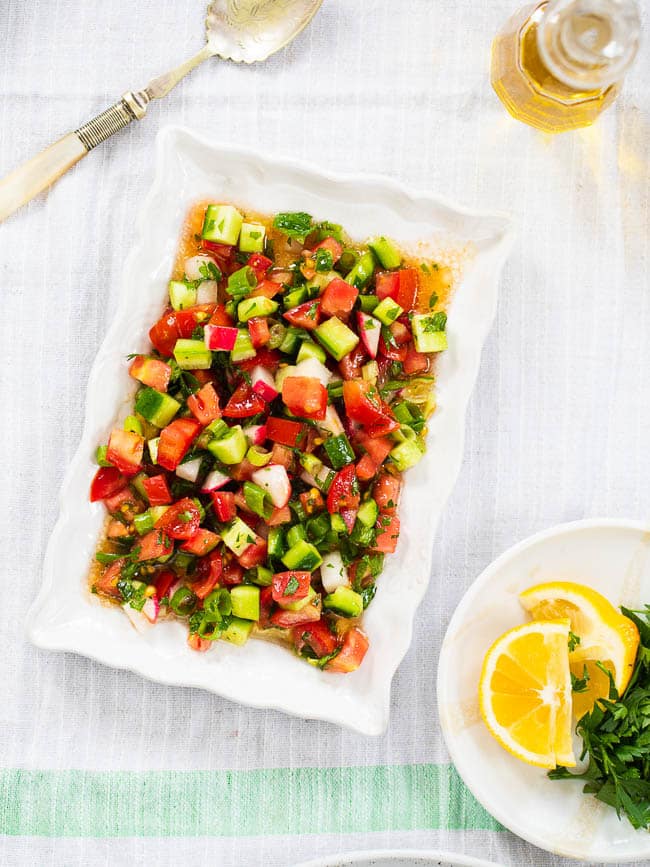
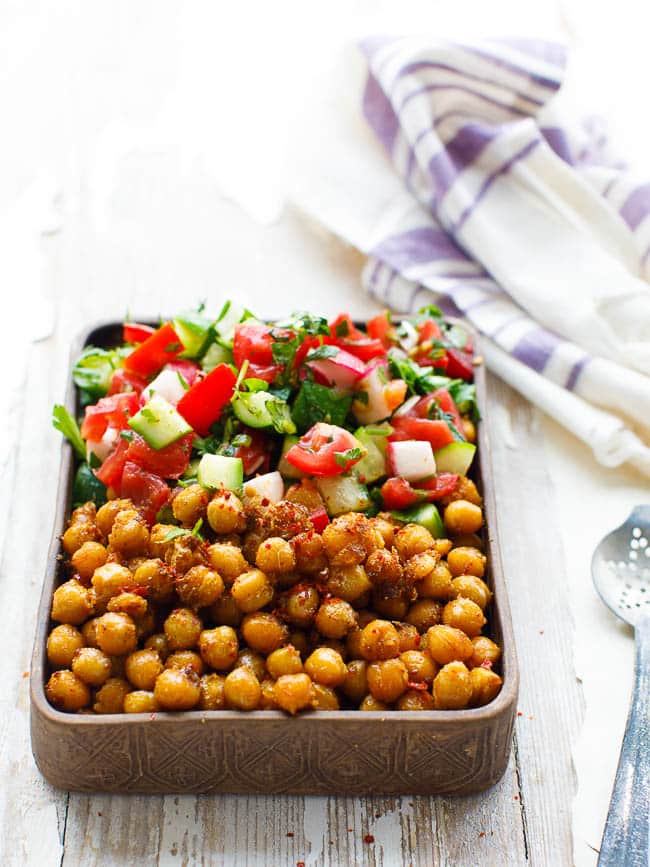
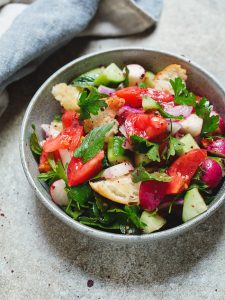
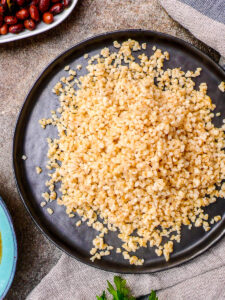
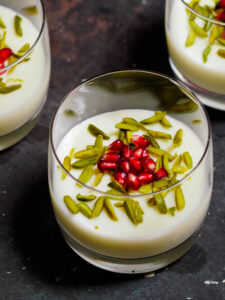




9 responses
Easy to fix and delicious even without some of the added fresh vegetables.
My Turkish mom would add some cumin to the kisir and serve with Romain lettuce leaves and sliced radishes. She learned her recipe in Aleppo Syria.
What a wonderful variation! Thanks so much for sharing.
I went to a Turkish restaurant and had kisir with both hazelnuts and walnuts. It was the first time I tried and I absolutely loved it! Delicious 😋
Ps I meant hazelnuts of course… sorry… long hot day …
No mention of walnuts, which are a common ingredient in kisir as prepared in the many Turkish restaurants of Hackney and neighbouring boroughs in northeast London. I love the additional texture as well as taste which goes so well with the tomatoes. Thoughts?
By all means go for it! As far as I’m aware, nuts of any kind are not commonly added to kisir, though I’m sure there are local versions where this is indeed the case. My guess would actually be that the restaurants you frequent add walnuts rather than hazelnuts, though, as hazelnuts are rarely used in savoury foods in Turkey. I have many great memories from Turkish restaurants in the Hackney/Dalston/Stoke Newington area from when I lived in London, though some of them do take some liberties with some recipes compared to what you get in Turkey to adapt to personal and local preferences (nothing wrong with that, of course!).
I just returned from a 2 week trip to Turkey. Since then I have been scouring the internet for Turkish recipes. I’m so glad that I found your site. I just made this recipe for lunch and it is so delicious! I used heaping tablespoons full of both the pepper paste and tomato paste because all of the Turkish Youtubers I have watched do. I was out of grain onions so I used finely minced yellow onion. Even so, I could eat this dish all day and all night. Thanks!
Love your recipes!